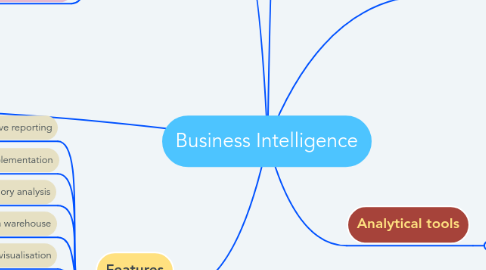Business Intelligence
da Євгеній Багмуцький


1. Components
1.1. Multidimensional aggregation and allocation
1.2. Denormalization, tagging and standardization
1.3. Realtime reporting with analytical alert
1.4. A method of interfacing with unstructured data sources
1.5. Group consolidation, budgeting and rolling forecasts
1.6. Statistical inference and probabilistic simulation
1.7. Key performance indicators optimization
1.8. Version control and process management
1.9. Open item management
2. Features
2.1. Self-serve reporting
2.2. Fast implementation
2.3. In-memory analysis
2.4. Data warehouse
2.5. Data visualisation
2.6. OLAP
2.7. Report scheduling
2.8. Advanced security
2.9. Mobile Access
2.10. Office integration
3. Key stages of BI
3.1. Data Sourcing
3.2. Data Analysis
3.3. Situation Awareness
3.4. Risk Analysis
3.5. Decision Support
4. Big data
4.1. Definition
4.1.1. Big data is a term for data sets that are so large or complex that traditional data processing application software is inadequate to deal with them.
5. Analytical tools
5.1. relationships
5.1.1. Attribute
5.1.2. Hierarchy
5.1.3. DataStore
5.1.4. Exit
5.2. patterns
5.2.1. Information Consumer Pattern
5.2.2. Analysis Pattern
5.3. Future trends
5.3.1. Online
5.3.2. Anywhere, anytime
5.3.3. Real-time
5.3.4. Centralized, formalized
5.3.5. RFID
5.3.6. More samantic capabilities

